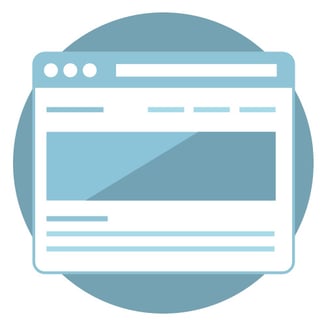
Microsites are branded, one to three page websites, that are hyper-focused on a specific goal, campaign, or event. They operate as independent websites (sometimes on a temporary basis), however they are also distinctly connected to the organization’s parent site.

Using an event microsite is beneficial for a number of reasons. For starters, it sells tickets by making it easy for users to learn about the event and RSVP without distractions. In addition, microsites are inexpensive; can be deployed very quickly; and can be easily integrated into your email marketing campaign to grab your audience’s attention and track conversions. Plus, there are SEO benefits – employing a microsite will likely boost your overall ranking and allow new audiences to find your event online.
With that said, simply having a microsite isn’t enough to ensure its success in communicating the value of your event and inspiring people to buy tickets. To that end, let’s take a look at the seven best practices for designing event microsites:
1. Keep it short and simple. To be most effective, event microsites should be four pages at the absolute maximum. In terms of content, we recommend clearly and concisely introducing the event and explaining why visitors should want to get involved. Don’t take for granted that visitors may already be interested in attending – really sell the benefits of the event and inspire people to take immediate action.
2. Define clear engagement points. Remember, the purpose of a microsite is often singular or distilled. Make calls-to-action, ticketing checkouts or contact forms clear and easily accessible. A microsite should act in part like an extended landing page--with a guiding performance metric from which you can judge it's performance--conversion rate. Align the messaging of calls-to-action with content to increase interest and relevancy.
3. Embrace a bold, user-friendly design. An event microsite offers an excellent opportunity to try something different in terms of design. Because microsites can be more creative than your organization’s main website, it’s an ideal place to use a bolder design, along with new colors and typography. We also recommend making sure the microsite’s navigation is intuitive so users can easily find the information they need.
4. Stay on brand. Although your event microsite can have a bolder design, make sure you stay connected to the main brand on some level. This will ensure that visitors familiar with your organization understand that the microsite is affiliated with your parent website.
5. Link back to your parent site. Because some visitors may find your event microsite through organic search, referral links, and social media, they may not be familiar with your organization initially. Invite them to learn about your big picture efforts by including your logo and linking back to your parent website.
6. Spread the word on social media. Social media is an excellent way to find new audiences for your event. To begin, we recommend promoting the event microsite across your organization’s social media channels, and asking supporters, donors, and attendees to share the link with their social networks as well.
7. Offer other opportunities for participation. In addition to asking visitors to buy a ticket and RSVP to the event, we recommend offering additional ways people can participate if they aren’t able to attend. For example, include a donation button to inspire monetary gifts; encourage visitors to share the event microsite with their network; and invite visitors to sign up for the mailing list.
Learn more: Best Practices for Nonprofit Website Design and ticketing website design
by Jonathan Franchell, CEO of Ironpaper - For more tips and hacks: Need to remove a new line after h1 tags? Both web designers and SEO practitioners need to employ headline tags: H1, H2, H3 in several ways to improve web page structure and tag...

The Crowded Arena of the IT Marketplace Updated December 2024 The Information Technology (IT) landscape is experiencing rapid growth and intensifying competition. IT spending is projected to reach nearly 5.1 trillion U.S. dollars in 2024, a...

The marketing industry is transforming significantly due to generative AI and increasing market complexity. Gartner's prediction of a 25% decline in traditional search traffic suggests that the era of search engines is dying. AI tools, particularly...

Updated December, 2024 The field of digital marketing is evolving rapidly in response to new technology and changing buyer expectations. To help career-minded marketers, we’ve rounded up the top 10 skills needed to succeed in the field. These are...
